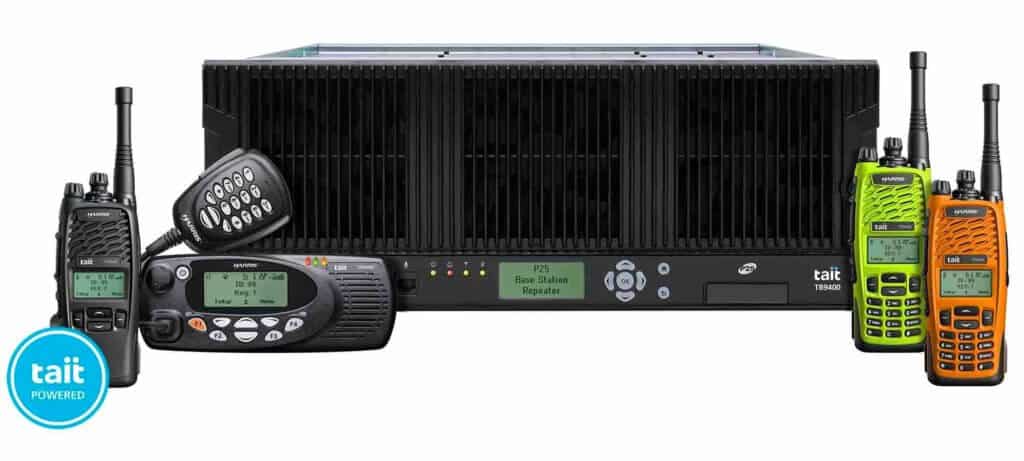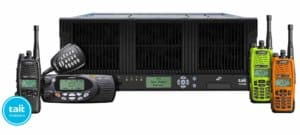The Tait Analog Simulcast over IP (AS-IP) solution is quickly growing in popularity among public safety agencies as an alternative to P25. For instance, Matthew Gay, the Maintenance Manager for the Madison County Fire Department, described it this way, “We believe we got the absolute best system we could get, and it was inexpensive. I don’t mean we got the best system for the money we had; I mean we got the best that we could get. And it was inexpensive.”
There are several reasons for the growing popularity of the AS-IP solution. In this video, we’ll discuss the top 5 benefits of this solution and why it could be the right choice for your organization. Let’s get started.
1) Easy to Install
Historically, simulcast networks were notoriously difficult to build and sync correctly. But at Tait, we took several steps to ensure the transition to AS-IP would be as quick and painless as possible for our customers.
Our new transmitter design removes all tuning and equalization challenges. Syncing the different towers happens instantly through IP connectivity and GPS. This results in an easier set-up, less user-training, and better audio quality.
Furthermore, there is no need for a 3rd party voter, reducing the equipment required for a typical analogue simulcast installation and saving up to 67% of your rackspace. This reduction in equipment also lowers the price, support costs and power consumption when compared to other vendor’s voting solutions.
2) IP Connectivity
Choosing an analog radio network doesn’t mean you have to remain disconnected from the digital world. Tait IP connectivity between sites eliminates the need for multiplexers at each site, reducing costs and eliminating this single point of failure.
You can also use IP linking to connect with APCO P25 DFSI capable dispatch consoles in analog mode, thus reducing hardware and improving console connectivity.
And of course, the IP backbone interconnects the various elements of the network, enabling comprehensive remote monitoring, diagnostics, and firmware upgrades. This means that maintenance has never been easier.
3) Coverage and Clarity
Here is how one customer described the coverage and clarity of Tait AS-IP, “Before, you had to look for places where you could talk on a portable. Now I’m looking for places that I can’t, and I haven’t found any yet.”
There are a couple reasons for this. In simulcast systems, audio is broadcast simultaneously over a number of transmitters on a single frequency. Essentially, each transmitter in the system transmits exactly the same signal, with the same characteristics, at the same time.
This provides the peace of mind every radio manager requires, knowing that users can roam between coverage zones with fewer dropped calls and without changing channels. The Voting software continuously combines the outputs of all receivers, ensuring that the best-received audio is constantly being selected, enabling the best transmission quality possible. When your users push to talk, they can rest assured knowing that clear audio will connect them.

4) Redundant and Reliable
Tait networks are built on some of the most reliable base stations on the planet, but we still take steps to ensure redundancy. Voting is key to effective simulcast networks and ensures that each radio user gets the best possible reception.
Every Taitnet AS-IP system has a primary central voting site. Customers can select a second voter license for a back up site, which means that if voting on the central site fails for any reason, it is automatically detected and the back-up site voter will seamlessly take over. The back-up site is pre-determined by the system engineer, ensuring voting is transferred to the most robust site available.
This mean you can ensure your people always have the best possible reception and that your network continues working, especially during emergencies, while also saving money today and into the future
5) Future Proof
Suppose your agency wants analog radio today, but digital P25 tomorrow. With Tait AS-IP, that’s not a problem. Every Tait 9400 product is remotely upgradeable to P25 linear simulcasted conventional, P25 phase 1 and P25 phase 2 trunked modes of operation. You can keep all your original 9400 components, and then all you’ll need to do is add new feature licenses and a new server for trunking control for phase 1 and 2 networks.
With Tait AS-IP, you can give your organization options and ensure the investment you make today will be useful tomorrow.
And there you have it, those are the top 5 benefits of Tait AS-IP. If you’d like to learn more about this solution, then visit our AS-IP page to read or request more info.
*Tait AS-IP is available exclusively from Harris Corporation in North America.




